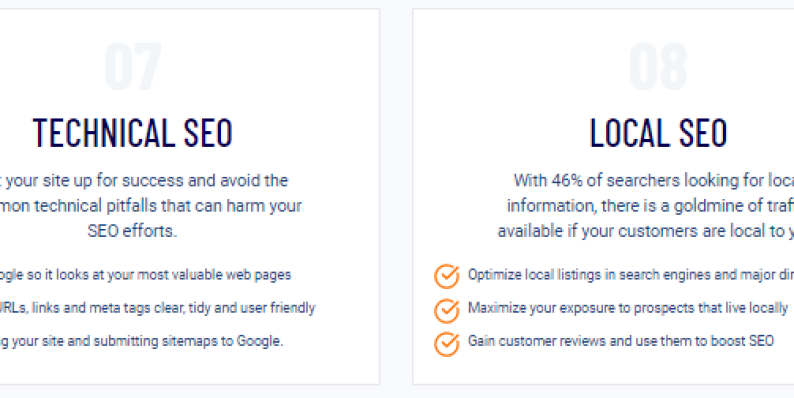JSON-LD at Scale: Schemas That Move the Needle in 2025
In 2025, enterprises and digital businesses are finally confronting the reality that structured data is no longer a “nice to have” — it’s a foundational pillar in web scalability, discoverability, and user experience. Among the tools driving this transformation, JSON-LD (JavaScript Object Notation for Linked Data) has emerged as the leading method for implementing structured data on a vast scale. Blending simplicity with power, JSON-LD allows site managers, marketers, and developers to infuse their content with semantic context rapidly recognized by search engines and intelligent agents.
But what schemas truly move the needle in today’s evolving digital ecosystem? As we push deeper into a world powered by generative AI, AI-powered search, and deeper personalization engines, the schemas that impact visibility and conversion are evolving. This article explores how enterprises are leveraging JSON-LD in 2025, the most effective schemas with measurable ROI, and how even small adjustments in structured data strategy can yield large gains at scale.
The Rise of JSON-LD as the De Facto Standard
The growth in adoption for JSON-LD over the past four years has been nothing short of extraordinary. JSON-LD is now the preferred structured data format supported by Google, Bing, and other major platforms due to its ease of implementation, non-intrusiveness, and reduced risk of breaking core site logic compared to microdata or RDFa. Coupled with machine learning’s reliance on well-structured inputs, JSON-LD bridges the gap between raw content and successful digital processing.
A recent W3C study published in late 2024 revealed that over 87% of enterprise-level websites that rank in the top three organic positions for their targeted keywords are using JSON-LD correctly and consistently.
High-Impact Schemas in 2025
While there are dozens of applicable schemas under schema.org, only a handful in 2025 have proven to move the commercial needle significantly — particularly for search engine optimization (SEO), click-through rates (CTR), and conversion optimization.
Below are the leading schemas demonstrating meaningful results:
- Product Schema: This schema remains the cornerstone for eCommerce businesses. Key properties like price, availability, brand, and reviewRating still drive high ROI. In 2025, structured enhancements for environmentalImpact and sustainabilityFeatures have gained traction with AI-based search systems promoting eco-friendly products.
- FAQPage & HowTo: Particularly effective in reducing bounce rate and increasing dwell time. Google continues to display these schemas as rich results, and businesses using dynamic JSON-LD generation alongside content updates are seeing upticks in zero-click search visibility.
- Organization and LocalBusiness: As personalization in search deepens, these schemas help agents retrieve precise and trustworthy business details like geolocation, customer service hours, and CSR rankings. Increasingly important for reputation management AI engines.
- JobPosting: Vital for large enterprises and staffing platforms. With job market AI analyzers parsing real-time job data at scale, companies accurate with this schema see higher candidate quality and faster time-to-hire in AI-driven platforms like Google Jobs and LinkedIn AI Recruit.
- Event and Course schemas: These inform AI engines for educational and experiential targeting. As AI search begins customizing SERPs with “best local events this weekend” and “courses for back-end developer roles,” exposure depends strongly on accurate and rich JSON-LD implementations.

Implementing JSON-LD at Scale: Technical Challenges
Deploying JSON-LD strategically across thousands or millions of pages is not a trivial task. Many organizations begin with hard-coded JSON-LD snippets but quickly hit scalability and maintenance walls. In 2025, advanced use cases have turned to dynamic JSON-LD rendering using frameworks like:
- Node.js + React/Next.js: Dynamic rendering capabilities enable large eCommerce platforms to inject schema during SSR (server-side rendering), ensuring consistency across template-based product pages.
- Headless CMS integrations: Platforms like Contentful, Sanity, and Strapi now support custom schema injections at the API level—allowing marketers to define structured data via visual schema builders, increasing deployment velocity.
- Serverless functions and edge computing: For companies managing massive sites (10M+ URIs), edge-layer personalization ensures localized and real-time JSON-LD customization based on AB testing, seasonal promotions, or language geo-detection.
One common mistake seen in large deployments is bloated or irrelevant JSON-LD. Schema overpopulation can trigger validation penalties or dilution effects. Google’s Structured Data Guidelines in 2025 stress precision — schema should reflect only data that exists clearly in the page’s static content. Hidden or implanted keywords are now algorithmically demoted.
Measuring What Moves the Needle
Businesses looking to justify JSON-LD investment need clear KPIs. In 2025, the most forward-thinking teams use structured data analytics alongside traditional SEO metrics. Key metrics include:
- Rich result eligibility and impression ratio: How many of your structured URLs actually show enhancements in SERPs.
- CTR improvement over baseline: Measured per schema type. The Click Rate Delta between FAQPage-enhanced snippets vs. non-enhanced versions is still one of the highest.
- Crawl budget optimization: Search engines increasingly use your schema map to determine priority crawl paths. Efficient JSON-LD equals smarter crawl allocation.
- Entity linking success in knowledge graphs: For brand and reviews, successful linking into Google’s Knowledge Panel or Bing Entity Graph drives impressions even in non-commercial queries.
Cloud-native SEO and data observability platforms like ContentKing, Oncrawl, and JetOctopus now offer native support for structured data auditing, making it easier to track JSON-LD deployment issues and evolution.
Innovations in JSON-LD Integration
2025 is also a year where innovation in JSON-LD strategy intersects with AI and LLMs. Notably, companies are using natural language processing (NLP) to auto-generate schema from content. Some innovative approaches include:
- LLM-driven schema mapping: Tools use large language models to parse page copy and extract entity relationships, then generate and validate JSON-LD structure automatically.
- User Input Schema Triggers: For dynamic web apps, input actions now trigger schema regeneration. For example, product filters update not just UI components but regenerate current-view Product + Offer schema combinations.
- Schema-as-UX: Return user experiences are now tailored using cached structured user behavior to provide prefetching metadata — essentially combining structured data and personalization at the meta layer.

Emerging Schemas on the Horizon
Looking ahead, schema.org and allied developers are expanding vocabulary to include tighter vertical relevance and AI compatibility. Some rising schema types worth preparing for include:
- EnergyConsumptionDetails: For sustainable product profiling. AI buyers prefer energy-labeled content inline with ESG standards.
- NeuralInteractionSchema: Designed for modeling interaction with human-centric LLMs, where emotional or tone analysis from support logs may be mapped to context-based recommendations.
- ProfilePageSchema: As personal branding becomes vital in professional search environments, structured personal profile schemas will influence AI scoring on trustworthiness and relevance.
Keeping ahead in structured data means constant training and automation. Tools like Schema.org Validator and Experience API integration with observability platforms help enterprise teams test and deploy faster across thousands of templates and page types.
Conclusion
Structured data, when implemented correctly and strategically through dynamic, efficient JSON-LD, is a silent yet powerful engine behind digital visibility in 2025. The schemas that make a difference — Product, FAQPage, JobPosting, Event, and Organization — not only enrich rankings but enhance user experience, platform understanding, and brand authority in an AI-driven discovery landscape.
For businesses seeking a competitive edge, it’s no longer about whether to use JSON-LD — it’s about how precisely, how broadly, and how smartly you implement it. UUIDs, standardization, and schema observability are helping organizations bring order to structured data chaos. It’s not rocket science — but it is highly technical, strategic, and extremely rewarding when done at scale.
- ShotSpotter Locations: Surveillance Technology - December 30, 2025
- Pokémon UNITE Error Code 2102 Explained & Fixed - December 28, 2025
- Why Microsoft Error Code 3399745538 Occurs and How to Fix It - December 26, 2025
Where Should We Send
Your WordPress Deals & Discounts?
Subscribe to Our Newsletter and Get Your First Deal Delivered Instant to Your Email Inbox.



